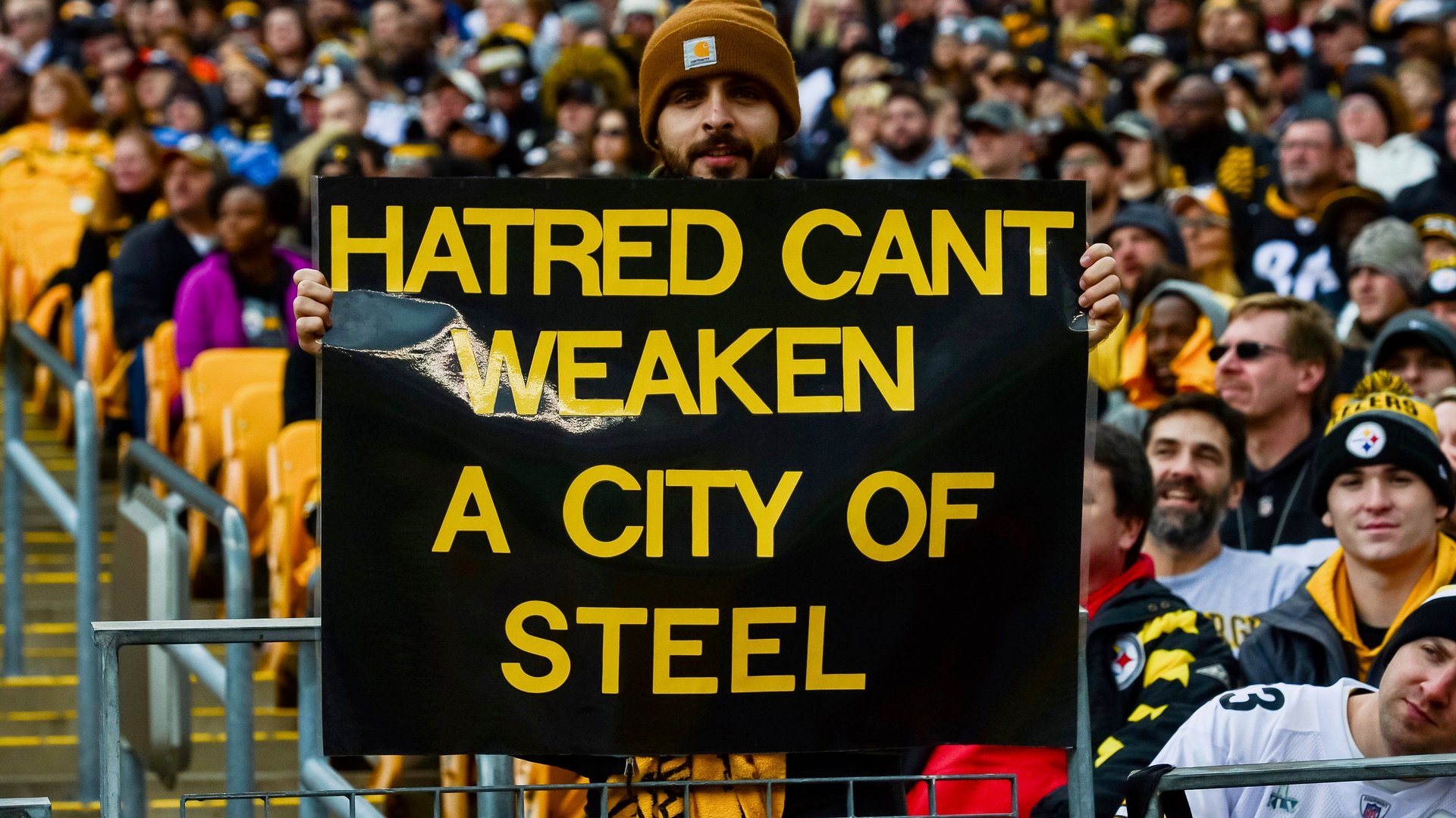The Pittsburgh shooter may become the second American to face death for a federal hate crime
The death penalty has existed for as long as there have been laws. In the 18th century BC in Babylon, the Code of King Hammurabi laid out the ultimate punishment for 25 different crimes. The practice continues in the US today, sanctioned by 30 states and federal law.


The death penalty has existed for as long as there have been laws. In the 18th century BC in Babylon, the Code of King Hammurabi laid out the ultimate punishment for 25 different crimes. The practice continues in the US today, sanctioned by 30 states and federal law.
Still, only one person has ever been sentenced to death for hate crimes under federal law, and that’s self-declared white supremacist Dylann Roof, who shot nine people in a historically black church in Charleston, South Carolina, in 2015. Now, it seems a second such sentence could be handed down to Robert Bowers, who is charged with killing 11 people at the Tree of Life synagogue in Pittsburgh, Pennsylvania, on Oct. 27.
In a statement issued after the shooting on Saturday, US attorney general Jeff Sessions condemned the violence, saying “every American” has the right to safely attend a house of worship. “These alleged crimes are reprehensible and utterly repugnant to the values of this nation,” he said. “Accordingly, the Department of Justice will file hate crimes and other criminal charges against the defendant, including charges that could lead to the death penalty.”
Federal death row
Currently, there are 63 people on death row under federal law. Many of them have pending appeals. To date, only three people have been executed under a federal capital punishment statute enacted in 1988 and expanded in 1994.
Between 1972 and 1988, there was a moratorium on federal executions after a series of cases in the US Supreme Court challenged the constitutionality of state death penalty laws. Although the high court didn’t ban executions altogether, it found various laws allowing the punishment deficient for different reasons. The federal statute in place then suffered from the same deficiencies. In 1988, a new US death penalty statute was enacted.
US president Bill Clinton expanded the federal death penalty in 1994 with the Violent Crime Control and Law Enforcement Act. It applies to 60 crimes, three of which—espionage, treason, and drug trafficking in large amounts—do not include murder.
Under the expanded federal statute, there have been three executions. In 2001, Timothy McVeigh was executed for the 1995 Oklahoma City bombing that left 168 people dead. That same year, Juan Raul Garza, convicted of killing three people and running a marijuana drug ring in Texas, was put to death. And in 2003, Louis Jones was executed for the kidnapping and murder of 19-year-old army private Tracie McBride.
None of those executions involved hate crimes, however.
History of US hate-crime law
The first federal statute codifying prosecution for a crime predicated on race, color, religion, or national origin was enacted in 1968. The following year, that act was expanded to include crimes committed against victims based on an actual or perceived disability. And in 2009, US president Barack Obama further expanded the protections of federal statute to include crimes targeting victims for gender identity and sexual orientation under the Shepard Byrd Act.
At that time, Sessions was an Alabama senator and opposed the expansion of the statute. But hate-crime prosecutions seem to have remained a priority for the Justice Department since Sessions’ appointment as attorney general.
In a hate-crime prosecution, the government must show that the charged crime was motivated by hate for a protected group. In the case of Roof, who identified as a white supremacist and targeted a black church, this additional element of intent was evident. Likewise, in the recent synagogue shooting, prosecutors should not have too much trouble proving the defendant, Bowers, was driven by his anti-Semitism. Not only did Bowers target a Jewish place of worship, but he reportedly told police that “all these Jews need to die.”
The 46-year-old suspect left other traces of his hate that will support the charges. He posted anti-Semitic comments on Gab, a social media platform favored by the alt-right. Although his account was removed from the site, reporters managed to capture screen shots of some of Bowers’ posts before that happened, including his response to the work of the Hebrew Immigrant Aid Society, a nonprofit which helps refugees of all backgrounds resettle; HIAS, he stated, “likes to bring invaders that kill our people.”
Bowers faces 29 federal charges, including 11 counts of “obstruction of exercise of religious beliefs resulting in death.” The criminal complaint filed on Oct. 27 against Bowers says he made statements “evincing an animus towards people of the Jewish faith.” Among other proof of this hate, the filing notes that “Bowers commented to one law enforcement officer, in substance, ‘they’re committing genocide to my people. I just want to kill Jews.'”